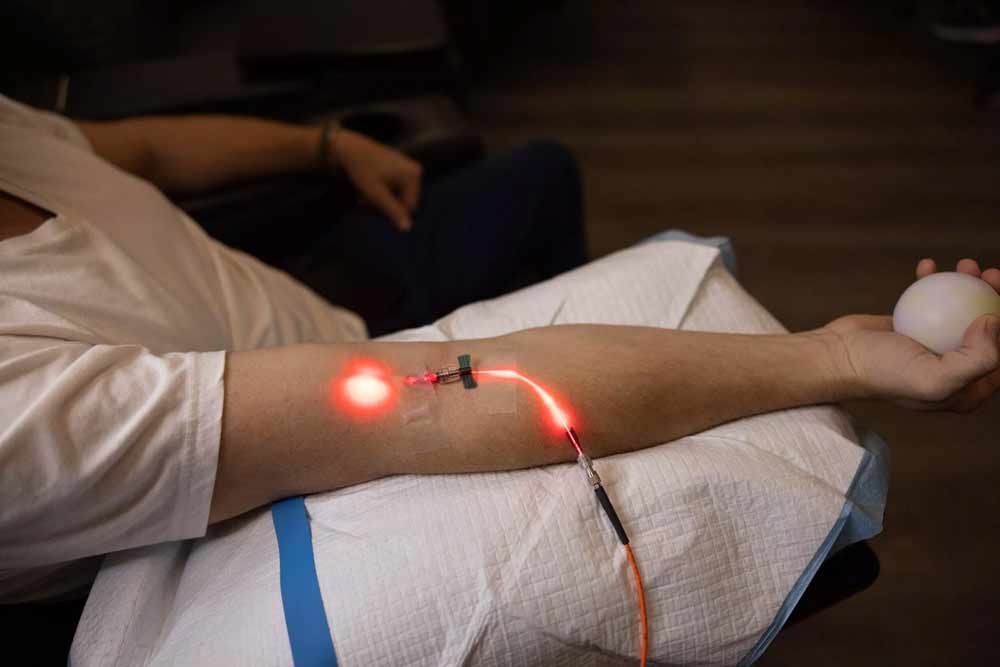In the quest for better health and wellness, individuals facing chronic illnesses, including those suffering from chronic fatigue syndrome, are continuously seeking effective treatments that can alleviate their symptoms and enhance their quality of life. Among the myriad of options available, one innovative approach that has been gaining attention is the use of ozone and ultraviolet light intravenous (IV) therapy as a detoxification aid. This blog post aims to examine the detoxifying effects of this therapy on the body, offering insights for those in pursuit of relief from the burdens of chronic conditions.
Understanding Ozone and Ultraviolet Light IV Therapy
Ozone therapy involves the introduction of ozone (O3), a molecule comprised of three oxygen atoms, into the body. This can be administered in various ways, including through blood (via autohemotherapy), direct injection
into the affected tissues, or insufflation. When combined with ultraviolet blood irradiation—where blood is exposed to ultraviolet light to enhance its oxygenation and purification—the therapy is believed to have potent detoxifying and immunomodulating effects.
The Detoxifying Mechanism
At its core, the rationale for using ozone and ultraviolet light therapy lies in its purported ability to stimulate the body’s own detoxification processes. Here’s how it is believed to work:
Enhanced Oxygenation: Ozone therapy is thought to increase the amount of oxygen in the body, improving cellular function and energy production. This, in turn, aids the body’s natural detoxification systems, allowing for more efficient elimination of toxins.
Activation of Antioxidant Systems: By modulating the immune system, ozone therapy can stimulate the production of antioxidants. These molecules play a crucial role in neutralizing free radicals and other harmful substances that can accumulate in the body, particularly in individuals with chronic illnesses.
Improved Blood Circulation: The combined effect of ozone and ultraviolet light therapy on the blood can lead to improved circulation. Better blood
flow ensures that toxins are more effectively transported to organs responsible for their elimination, such as the liver and kidneys.
Potential Health Benefits
For those coping with chronic illness and fatigue, the detoxification benefits of ozone and ultraviolet light IV therapy may translate into several positive health outcomes:
Reduced Inflammation: By lowering the body’s toxic load, the therapy can decrease inflammation—a fundamental component of many chronic diseases.
Enhanced Immune Function: The immunomodulatory effects of ozone may help bolster the body’s defense against infections and disease.
Increased Energy Levels: Improved cellular function and detoxification can result in a noticeable boost in energy and stamina, a welcome relief for
individuals suffering from chronic fatigue.
Considerations and Safety
While the potential benefits of ozone and ultraviolet light IV therapy are compelling, it is crucial for individuals to approach this treatment with caution. Selection of a qualified and experienced practitioner is paramount, as improper administration of ozone can have adverse effects. Furthermore, while research on the efficacy and safety of this therapy is promising, it is still emerging. Those interested should thoroughly discuss the risks and benefits with their healthcare provider to determine if this therapy is appropriate for their specific condition and health status.
Final Thoughts
For many grappling with the relentless challenges of chronic illness and fatigue, finding effective treatments that can offer relief and improve quality of life is a constant pursuit. Ozone and ultraviolet light IV therapy
represents a novel approach, grounded in its potential to enhance the body’s natural detoxification processes. While further research is needed to fully elucidate its benefits and safety, it opens up new avenues for individuals seeking complementary therapies
in their battle against chronic conditions. As always, it is essential to approach any new treatment with informed caution and in consultation with healthcare professionals.

